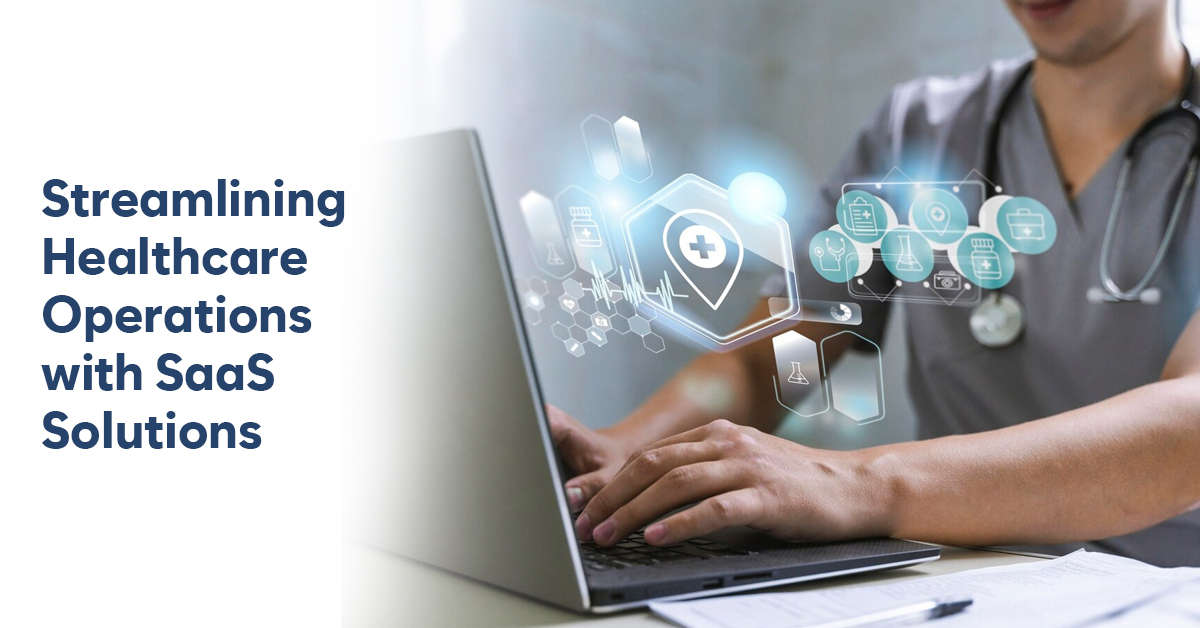In today’s rapidly evolving healthcare landscape, healthcare facilities are under increasing pressure to provide high-quality care while managing operational efficiency and costs. Streamlining healthcare operations has become imperative, and one powerful tool that can aid in this endeavor is Software as a Service (SaaS) solutions. These cloud-based software applications offer a range of benefits to healthcare facilities, enabling them to enhance patient care, improve administrative processes, and optimize their overall operations.
This blog explores how SaaS solutions can be leveraged to streamline healthcare operations within your healthcare facility.
Electronic Health Records (EHR) Management
One of the most critical aspects of healthcare operations is the management of Electronic Health Records (EHR). Transitioning to a SaaS-based EHR system can significantly improve the efficiency of record-keeping and patient data management. Key advantages include:
Accessibility: Authorized medical staff can access patient records securely from any location, enabling better-coordinated care and remote consultations.
Data Security: SaaS EHR solutions often have robust security measures and data backup systems, helping healthcare facilities comply with stringent HIPAA regulations.
Integration: Many SaaS EHR systems can seamlessly integrate with other healthcare software, such as billing and scheduling systems, making data sharing more efficient.
Cost Savings: Traditional EHR systems often require substantial upfront investments in hardware and IT support, while SaaS solutions are more cost-effective and scalable.
Appointment Scheduling and Patient Management
SaaS-based appointment scheduling and patient management systems offer healthcare facilities more flexibility and efficiency in managing appointments and patient interactions. Some advantages of these systems include:
Online Booking: Patients can book appointments and manage their schedules online, reducing phone traffic and improving the patient experience.
Automated Reminders: SaaS solutions can send automated appointment reminders to reduce no-shows, enhancing the facility’s revenue stream.
Data Analytics: Insights from SaaS scheduling systems can help facilities optimize staff allocation and reduce wait times.
Real-time Updates: Staff members can access the most up-to-date patient information and appointment schedules, improving coordination and reducing errors.
Billing and Revenue Cycle Management
SaaS solutions for billing and revenue cycle management can help healthcare facilities improve cash flow, reduce billing errors, and streamline the financial aspect of their operations. Key benefits include:
Automated Claims Processing: SaaS solutions can automatically process claims, helping facilities receive payments faster and reduce billing errors.
Reporting and Analytics: These systems often provide in-depth financial reporting and analytics to identify revenue cycle bottlenecks and areas for improvement.
Compliance and Regulation Adherence: Many SaaS billing systems stay up-to-date with the latest regulatory changes, ensuring compliance and reducing risks.
Faster Reimbursements: Streamlined billing and claims processing can result in quicker reimbursements, improving the facility’s financial stability.
Inventory Management
Effective inventory management is crucial for healthcare facilities to ensure that essential supplies and medications are always available. SaaS solutions for inventory management offer several advantages, including:
Real-time Tracking: Staff can monitor inventory levels in real-time, helping to prevent shortages or overstocking.
Automated Reordering: SaaS solutions can automatically generate reorder alerts when supplies reach predefined levels, saving time and reducing the risk of stockouts.
Cost Control: By closely monitoring inventory and ordering only what’s needed, healthcare facilities can reduce unnecessary spending and improve their financial health.
Audit Trails: SaaS inventory management systems often maintain detailed audit trails, enhancing accountability and compliance with regulations.
Telehealth and Remote Monitoring
Telehealth and remote monitoring have gained significant importance, especially considering the COVID-19 pandemic. SaaS solutions in this realm can offer healthcare facilities the following advantages:
Accessibility: Patients can connect with healthcare providers remotely, expanding access to care, particularly in rural or underserved areas.
Chronic Disease Management: Cloud-based SaaS solutions can enable remote monitoring of chronic conditions, allowing healthcare facilities to deliver proactive care.
Reduced Overhead: Telehealth solutions often require less infrastructure, reducing overhead costs associated with physical facilities.
Enhanced Patient Engagement: Patients can participate actively in their care by using SaaS-based remote monitoring and telehealth tools.
Conclusion
The healthcare industry is continually evolving, and healthcare facilities need to adapt to these changes to remain competitive and provide excellent patient care. SaaS solutions offer a flexible and cost-effective way to streamline healthcare operations, from electronic health records and appointment scheduling to billing and inventory management. By adopting these cloud-based solutions, healthcare facilities can enhance patient care, improve operational efficiency, and stay at the forefront of the healthcare industry, ensuring a brighter future for both patients and providers.
If you are looking to hire the right IT personnel for your healthcare facility, try SkillGigs. SkillGigs is an AI-based talent marketplace that helps connect employers with the right candidates.




